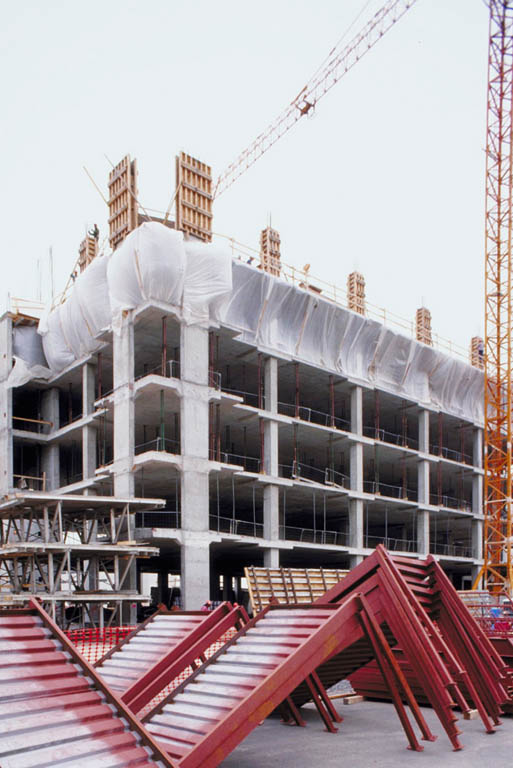Q - Why does bare aluminum flex need to be tested & classified by Underwriters' Laboratories?
Questions & Answers
A - One usually assumes, just because it's metal, there is no need to test to UL Standards. There are numerous variables when it comes to alumiminum flex duct. The UL testing program calls for a minimum of 12 tests: Surface Burning Characteristics, Burning, Corrosion, Mold Growth & Humidity, Temperature, Erosion, Pressure, Collapse, Tension, Torsion, Bending & Leakage. Even bare metal needs to be tested in accordance to certain Standards.
Q - Why do most bare aluminum flex ducts NOT come with a UL label attached?
A - It is very difficult to attach UL Labels to corrugated aluminum flex duct. We are looking at a few options that will eventually make it more viable.
Q - What is the difference between a UL Factory-Made Air Duct & Air Connector?
A - Both Air Ducts & Air Connectors go through the 12 various tests listed above, but Air Ducts must also be tested re: Flame Penetration, Puncture, & Impact. As a result, Air Connectors are limited to installations of under 14 ft and Air Ducts have no installed length limitation.
Q - What is the difference between Class 0 and Class 1 Air Ducts or Air Connectors?
A - Class 0 - Air Ducts & Air Connectors have Surface Burning Characteristics of ZERO. Class 1 - Air Ducts & Air Connectors have a Flame-Spread index of not over 25 without evidence of continued progressive combustion and a Smoke-Developed index of not over 50.
Q - What is meant by the term "meets" UL or ULC?
9094 Leslie St, Unit # 7, Richmond Hill, ON Canada L4B 3L9
A - Be careful when a manufacturer claims their product "meets UL or ULC" or is "UL or ULC approved". Neither term is valid. Either a product is Listed, Recognized or Classified...or it is not.
Q - What is UL 181?
A - UL 181 is an Underwriters' Laboratories Standard for testing materials used in the fabrication of Air Duct & Air Connector systems used in accordance with the International Mechanical Code (IMC), International Residential Code (IRC), Uniform Mechanical Code (UMC), and Standards of the National Fire Protection Association (NFPA) 90A & 90B. Air Duct and Air Connectors are Listed as either Class "0" or Class "1". UL 181 also references three other Standards: UL181A; UL181B; and UL 723.
Q - What test does UL 723 represent?
A - UL 723 tests for surface burning characteristics of any building material that is capable of supporting itself in a position of being supported in the test furnace to a thickness comparable to its intended use. UL 723 evaluates the spread of flame over its surface and the density of the smoke developed when exposed to a test fire.
Q - What is the difference between UL 181A and UL 181B?
A - UL 181A requires cover closure systems for use with factory-made rigid air ducts or air connectors complying with the Standard for Factory-Made Air Ducts and Air Connectors (UL 181) and in accordance with NFPA 90A & 90B. Closure systems consist of pressure sensitive tapes, heat activated tapes, and mastics.
UL 181B requires cover closure systems for use with factory-made flexible air ducts or air connectors complying with the Standard for Factory-Made Air Ducts and Air Connectors (UL 181) and in accordance with NFPA 90A & 90B. The requirements cover pressure sensitive tapes, mastic systems, and non-metallic fasteners for use as a part of a closure system.
Q - What is the difference between NFPA 90A and 90B?
A - The National Fire Protection Association (90A) - Installation of Air Conditioning and Ventilation Systems and (90B) - Installation of Warm Air Heating and Air Conditioning Systems cover systems that move air in buildings. NFPA 90A covers spaces of over 25,000 ft3 (707.9 m3) in volume or buildings of types III, IV, and V construction over three stories in height, regardless of volume. NFPA 90B applies to one or two family dwellings and spaces not exceeding 25,000 ft3 (708 m3) in volume in any occupancy. Both Standards are intended to prescribe reasonable provisions for safety to life and property. NFPA references & permits the use of UL Class 0 or Class 1 Air Ducts & Air Connectors.
Q - Why do only a few flexible ducts mention that they are tested for mold growth and humidity?
A - Every UL-181 & ULC-S110 Listed Air Duct or Air Connector has been tested for mold growth & humidity. This test is intended to determine if any of the raw materials used in fabrication actually contribute to the growth of mold or mildew.
Q - Can flexible Air Ducts or Air Connectors withstand exposure to (UV) ultraviolet sunlight?
A - Great question! Many non-insulated non-metallic flexible ducts are manufactured from basic polyester films and they will typically degrade with prolonged exposure to ultraviolet (UV) radiation or if positioned near a bio-treatment lamp (which is a UV emitter). Most polyethylene vapour barriers may also degrade over time if exposed to direct sunlight. There is currently a wide range of raw materials (with UV additives) suitable to produce quality Air Ducts & Air Connectors capable of better withstanding exposure to UV sunlight.
Q - When ordering thermal insulation, what is more relevant, thickness or density?
A - Times, they are a changin'! Gone are the days we refer to thermal insulation by referencing thickness, density or even R-Values. Although many people still feel comfortable refering to R-Values, the HVAC industry is starting to provide the insulation k-value only, based on installed wall thickness, when tested to ASTM C518. K-value is the measure of a thermal insulation's heat conductivity. This test method determines the "steady-state" thermal transmission properties of thermal insulations. A test specimen can meet the requirements if the thermal resistance is greater than 0.10 m2 KW.
Phone: (905) 771-8898 Fax: (905) 764-8188

